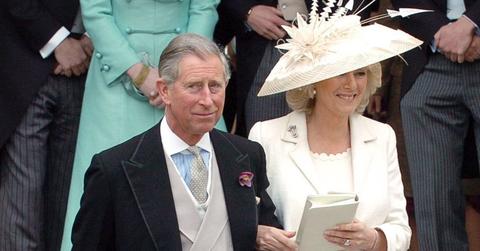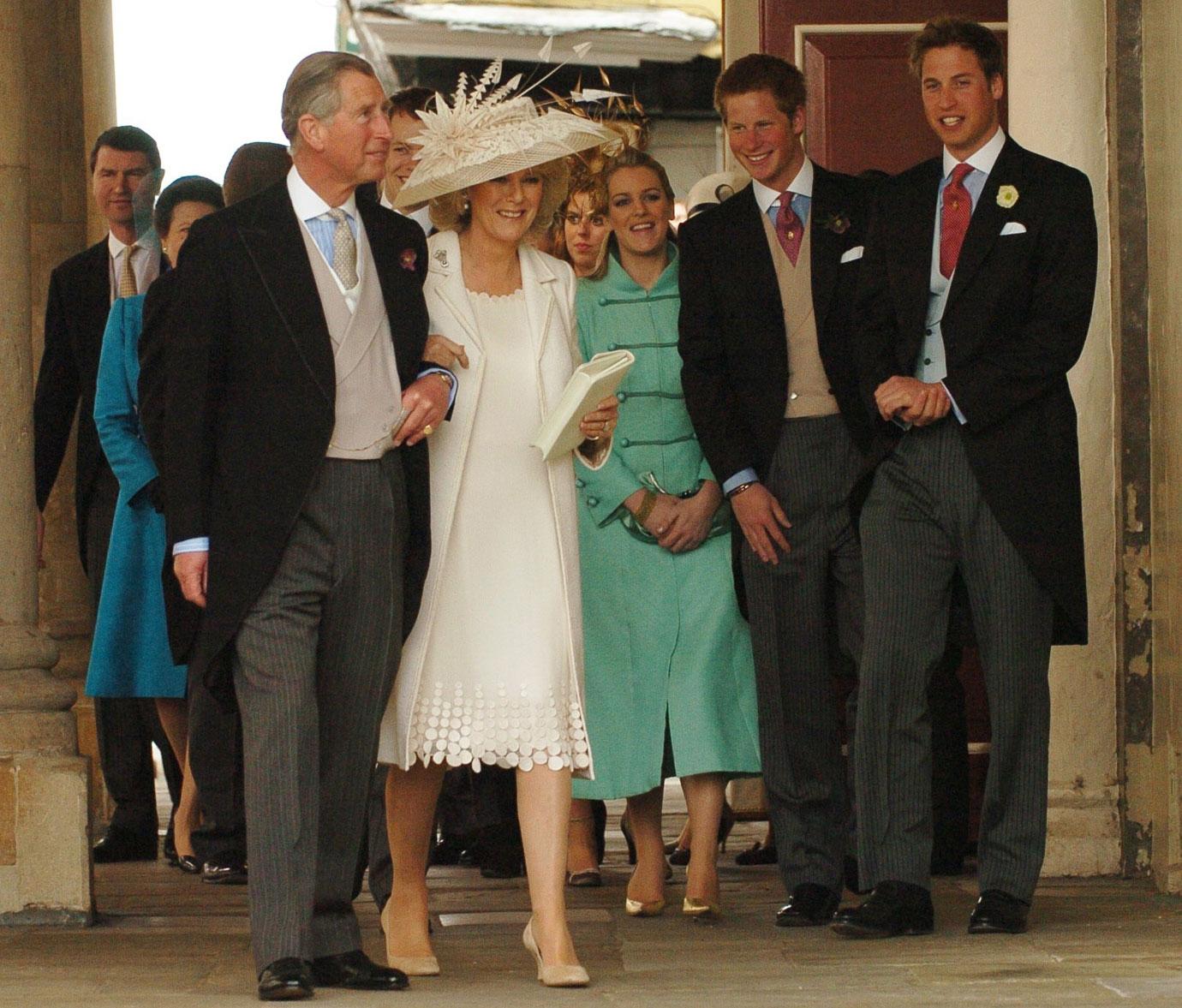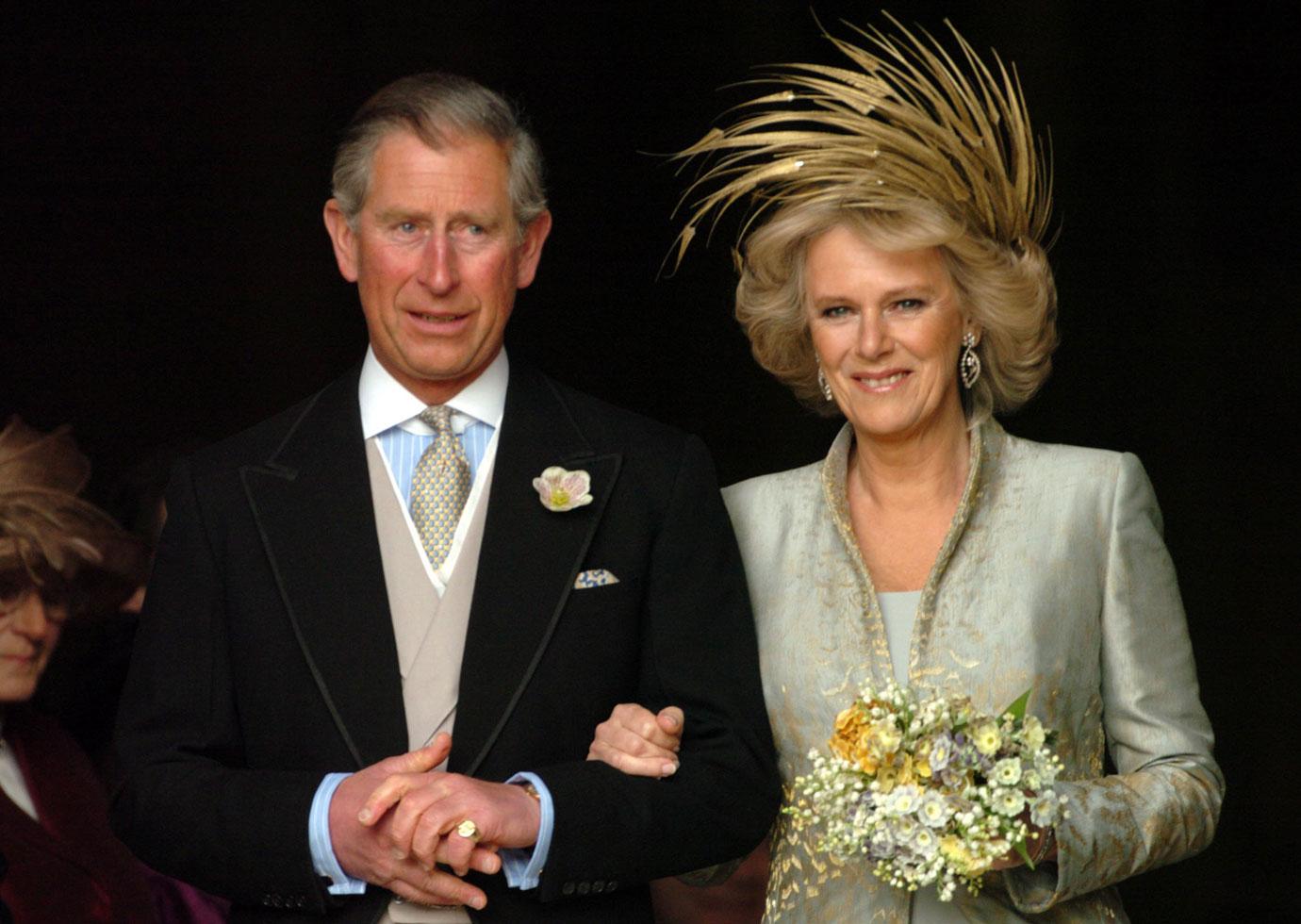 ROYAL FAMILY NEWS
ROYAL FAMILY NEWSCamilla's Wedding To Prince Charles: A Dream Or A 'Living Nightmare'?

Dec. 24 2020, Updated 1:26 p.m. ET
In the end, it was more than she could have hoped for. And less than she might have expected. ' proposal of marriage to Camilla came after a lifetime of living in the shadows, of avoiding the public gaze and denying a relationship that had sustained them through the bleak days of their first marriages.
“All Camilla ever expected, at that time, was that she would remain Charles’ number one mistress,” says a close friend. “She was even reconciled to the fact that he might stray.” So when the Prince’s proposal of marriage came during the Christmas holiday in 2004, complete with an heirloom emerald-cut diamond ring, it was something of a shock. What it meant for Camilla was a complete re-evaluation of her life and the way she lived it. For the past seven years, after her divorce from Andrew Parker-Bowles and Princess Diana's death, she was slowly eased into the role of Charles’ official companion. She had her own home, but it was widely known she lived with the Prince.
Now everything would change. At first, the idea she could become Charles’ wife filled her with trepidation, as did the thought that she could, one day, become queen. But the more she pondered the possibility, the more she warmed to the idea. Queen. Yes, that might do very well indeed. And the notion of succession didn’t just cross Camilla’s mind.
HOW CHARLES & CAMILLA WENT PUBLIC WITH THEIR 'LOVE AFFAIR' AFTER DIANA DIED
“The big question everybody was asking,” recalls a former courtier, “was whether Camilla could become Queen.” Camilla was now in the eye of a storm of controversy. “She suddenly discovered that being proposed to by the future King was not the stuff of dreams, but instead a living nightmare,” wrote one observer. The question of her immediate title triggered antagonism from the public. As the wife of the Prince of Wales, she could legitimately call herself Princess of Wales, especially since the previous holder of that title — Diana — was dead. But the howls of outrage from politicians and commentators put the kibosh on that.

Wedding of HRH Charles the Prince of Wales and Camilla Parker-Bowles at Windsor Guildhall April 2005. Photo: MEGA
It was announced she would be called Duchess of Cornwall, after Charles’ secondary title. “I really don’t think she bargained for any of this,” says an old friend. “The public had become used to her being around, and though she wasn’t the most popular figure, she got by. Her profile was improving. But Charles was determined she should be his wife, and now she was facing the backlash.”
For a time, the relationship between the two came under strain. It was not helped by the fact that besides an unofficial “Stop Camilla” campaign on the part of the public, lawyers and constitutional experts were claiming that no marriage by a Prince of Wales that was not conducted in a church could be deemed legal. Could things get worse? Yes. As the wedding day approached, people wanted to know if the Queen approved. Traditionalists would follow her lead and would back the marriage if she did, but not if she didn’t.
THE CAMILLAGATE SCANDAL: THE INFAMOUS LATE-NIGHT PHONE CALL THAT WRECKED THE ROYALS
The Queen said nothing, and public opinion was left in disarray. Then came the question of where Charles and Camilla were to marry. His first marriage, in 1981, had been at St. Paul’s Cathedral in London. Camilla’s was smaller but hardly any less grand — at the Guards’ Chapel, just a step away from Buckingham Palace. Charles’ people proudly announced that the ceremony would be at Windsor Castle. But it was then discovered that a special license would have to be granted by the appropriate government office — and that such a license would then have to be given to any member of the public who wanted it to get married at the Castle as well.
“That was a step too far for the Queen,” says the former courtier. “She refused to allow it, and Charles had to make a compromise by agreeing to a civil ceremony in the registrar’s office in Windsor Guildhall, outside the walls of the castle, followed by a blessing at the Chapel Royal.”
But in spite of all the hurdles — the Queen’s reluctance, the somber mood of the public, the indifferent weather and the crowds of protestors who had to be moved on by police — the day of the wedding, April 9, 2005, was a success. Charles and Camilla tied the knot in a simple civil ceremony — not perhaps the most befitting surroundings for an heir to the Throne to plight his troth. But they made their vows to each other away from the public gaze. Then Charles gave his wife a tender kiss on the cheek, which she returned with a delighted smile.
Want OK! each day? Sign up here!
INSIDE PRINCESS DIANA & CAMILLA’S SHOWDOWN OVER CHARLES: ‘I KNOW WHAT’S
The ceremony, the first time a Prince of Wales had married in a civil ceremony, was carried off stylishly, if a little self-consciously, in the presence of Prince William and Prince Harry and Camilla’s son, Tom.
Camilla wore an oyster silk basket-weave coat with a dazzling straw and feather hat by noted designer Philip Treacy. Those who knew her said she had never looked so happy. Then it was back to Windsor Castle for a change of clothes. For the Service of Prayer and Dedication at St. George’s Chapel, Camilla emerged in a porcelain blue silk dress by designer Robinson Valentine covered by a dazzling floor-length embroidered pale blue and gold coat and with a dramatic spray of golden feathers in her hair. Having lost weight, and with her often wayward hair tamed for the occasion, she looked positively regal. If the Archbishop of Canterbury had hoped for a low-key blessing, he was disappointed. The ceremony in St. George’s Chapel — full of pomp and elegance with much magnificent music and attended by 500 guests — more than made up for the somewhat hasty civil event that had just taken place.
As Charles and Camilla emerged on the ancient chapel steps, a sharp intake of breath could be heard from the crowd. Suddenly, Camilla found herself the object of admiration and delight — there were cheers and laughter, and she made her way hesitantly into the throngs, caught up in the excitement of the event, to receive their good wishes.
WHY YOUNG CAMILLA COULDN’T CHOOSE BETWEEN PRINCE CHARLES & ANDREW PARKER BOWLES
All eyes were on the Princes, and Harry. How would they react to their father marrying a woman whom their mother had dubbed ‘The Rottweiler?’ Later, the Queen herself hosted a reception in the State Apartments at Windsor Castle. And as she raised her glass to the newlyweds, guests remarked on what a brilliant game the sovereign had played.

Prince Charles and Camilla the Duchess of Cornwall after their blessing at St. George's Chapel, Windsor. Photo: News Licensing/MEGA
“At the outset, she appeased the traditionalists by appearing to disapprove of the marriage,” said one royal insider. “But the Queen is a practical woman. She came to realize that she could not fall out publicly with Charles over the one thing he wanted in life, and so she quietly backed down. “Charles realized that his mother had made considerable concessions in allowing the wedding — and in agreeing to attend the blessing, even if she wouldn’t go to the civil ceremony.
“If anything, this wedding had the effect of drawing mother and son closer together — each recognizing the needs of the other as if for the first time. So when the Queen made the toast to the newlyweds, everybody there felt she really meant it. It was a wonderful moment.” Camilla had finally come home. After half a lifetime of turmoil she was happy, and the twinkle in her eye gave just a hint of her expectations that one day she would sit on a throne alongside a King.

